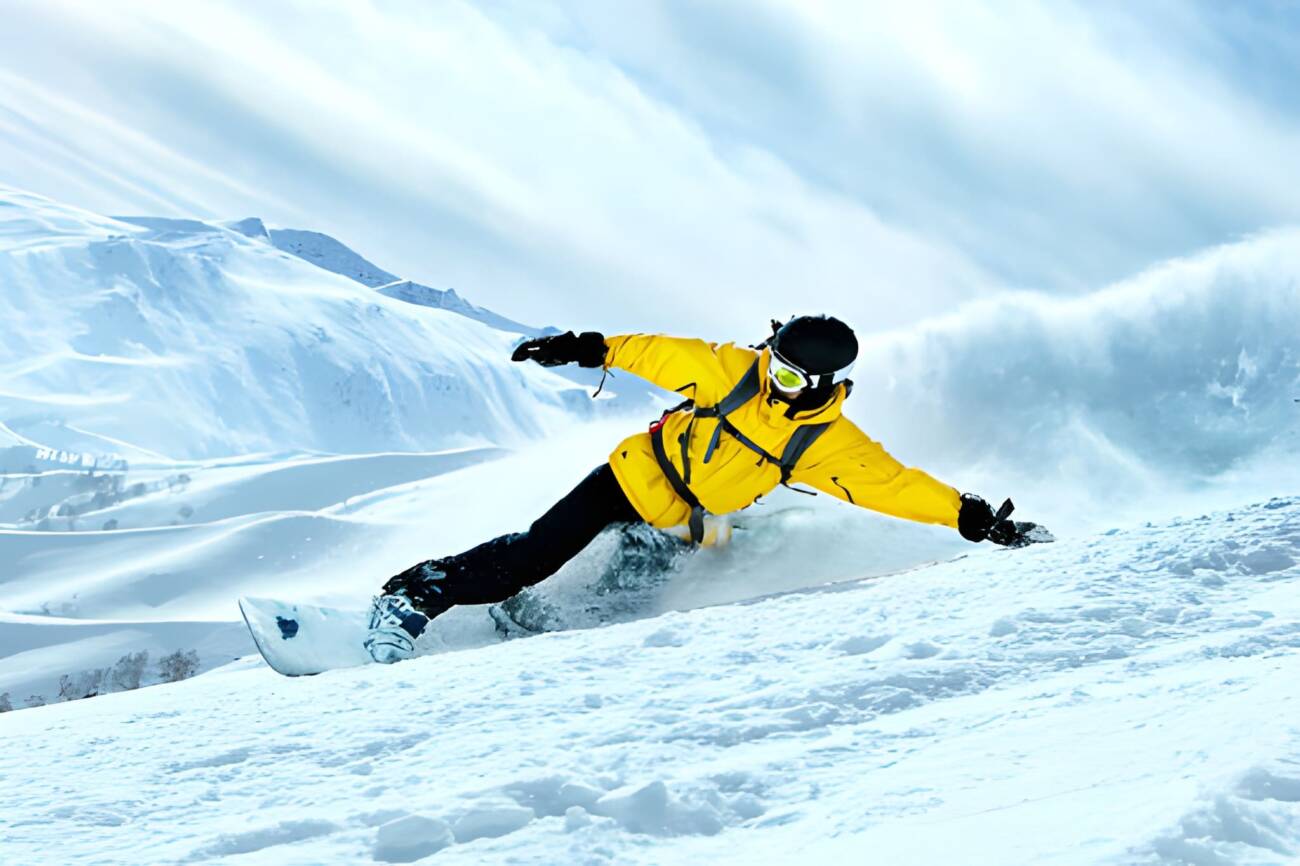There is a moment that happens to almost everyone who skis. You’re on a blue run that should be easy, but your legs are shaking halfway down. Your turns feel clumsy, your skis seem to have a mind of their own, and every stop you make feels like defeat rather than rest. In your head, you start telling yourself the same story: I must just be bad at this.
But here’s the thing most casual skiers do not know. It often has nothing to do with skill.
A huge number of skiers are fighting their gear, not the mountain. Their boots are too big. Their bindings are misaligned. Their skis are too stiff or too long. The forward lean on their boots is wrong for how they stand. Their stance is being dictated by equipment rather than by their own body. And when your body is reacting instead of leading, skiing feels difficult in a way that has nothing to do with talent.
Small adjustments can change everything.
Ski Length and Flex Matter More Than Most People Realize
Walk into any rental shop and you will hear the same conversation dozens of times a day.
“How tall are you?”
“Oh okay, here are your skis.”
The assumption is that height is the primary factor. It isn’t. Strength, balance, speed preference, terrain, and skiing style matter just as much. Someone strong and athletic but new to skiing may want a shorter, more flexible ski that helps them initiate smooth turns. A heavier skier may need a stiffer ski to avoid feeling like the tips are sliding out. Someone who skis mostly groomers needs a very different shape than someone who spends every weekend chasing powder in the trees.
Most people are handed whatever ski fits a simplified chart. And then they blame themselves for feeling unstable. When your ski matches your natural stance and the type of terrain you enjoy, you notice it immediately. Turn initiation feels lighter. Your body stops fighting the ski. Your confidence jumps.
Binding Alignment Changes Balance Without You Realizing It
Bindings look straightforward. Clip in. Ski. Simple. Except small adjustments in binding position change how your weight sits on the ski. If your bindings place your weight even slightly too far back, you will fight to stay balanced. Your thighs burn. Your turns skid. You feel like you are constantly recovering instead of actively controlling your line.
This is one reason new skiers often feel out of control on steeper slopes. It is not fear. It is physics. You cannot pressure the ski properly if your balance point is behind your feet.
A ski tech at any shop like Avalanche Sports ski rentals, Christy sports, or any store near your mountain, can check this in minutes. They can move the bindings slightly forward, or adjust the ramp angle, so that your center of mass stacks naturally above your boots. Suddenly you are not “leaning back” anymore. You are just standing on your skis the way you stand on solid ground. Everything gets easier from there.
Technique Improves Faster When Your Gear Is Working With You
Instructors see this every day. A student comes in frustrated. They feel stuck. They feel like skiing is always going to be difficult for them. Then the instructor looks at their stance and sees that the problem is not mental. It is mechanical.
Once the gear matches the body, technique improvements show up quickly. Turns link smoothly. Confidence follows. You start skiing from intuition instead of survival mode. The mountain has not changed. Your body has not changed. The relationship between them has changed.
Signs Your Gear Might Be Working Against You
You might need a fit or tuning adjustment if:
- Your legs burn early in the run, even on easy slopes.
- You feel like you are being pushed into the back seat.
- Your skis chatter or skid when you try to carve.
- You have to think about every turn instead of feeling it.
- You have to stop frequently, but not because you’re winded.
None of these are actually skill problems. They are alignment problems.
The Secret Advantage Most Skiers Never Use
Ski culture sometimes makes people feel embarrassed to ask for help with their gear. As if knowing about DIN settings is a test of loyalty. The truth is even professional skiers work closely with boot fitters and techs. They tweak setups constantly. They chase the smallest improvements because those small changes add up to enormous control.
The difference is that pros know something recreational skiers often don’t. Skiing is not just about going downhill. It is about how you interface with the mountain through your equipment. If that interface is clean, skiing feels effortless. If it is mismatched, skiing feels like fighting yourself.
The Real Takeaway
You are probably a better skier than you think you are. You just have not felt what it is like to ski with gear that is tuned to your body. The mountain does not reward suffering. It rewards connection. When the setup is right, the turns start to feel natural. The snow becomes something you move with instead of something you must conquer. Skiing becomes less about trying hard and more about trusting your legs and letting the mountain carry you forward. That is the feeling everyone is chasing. And it is a lot closer than you think.






